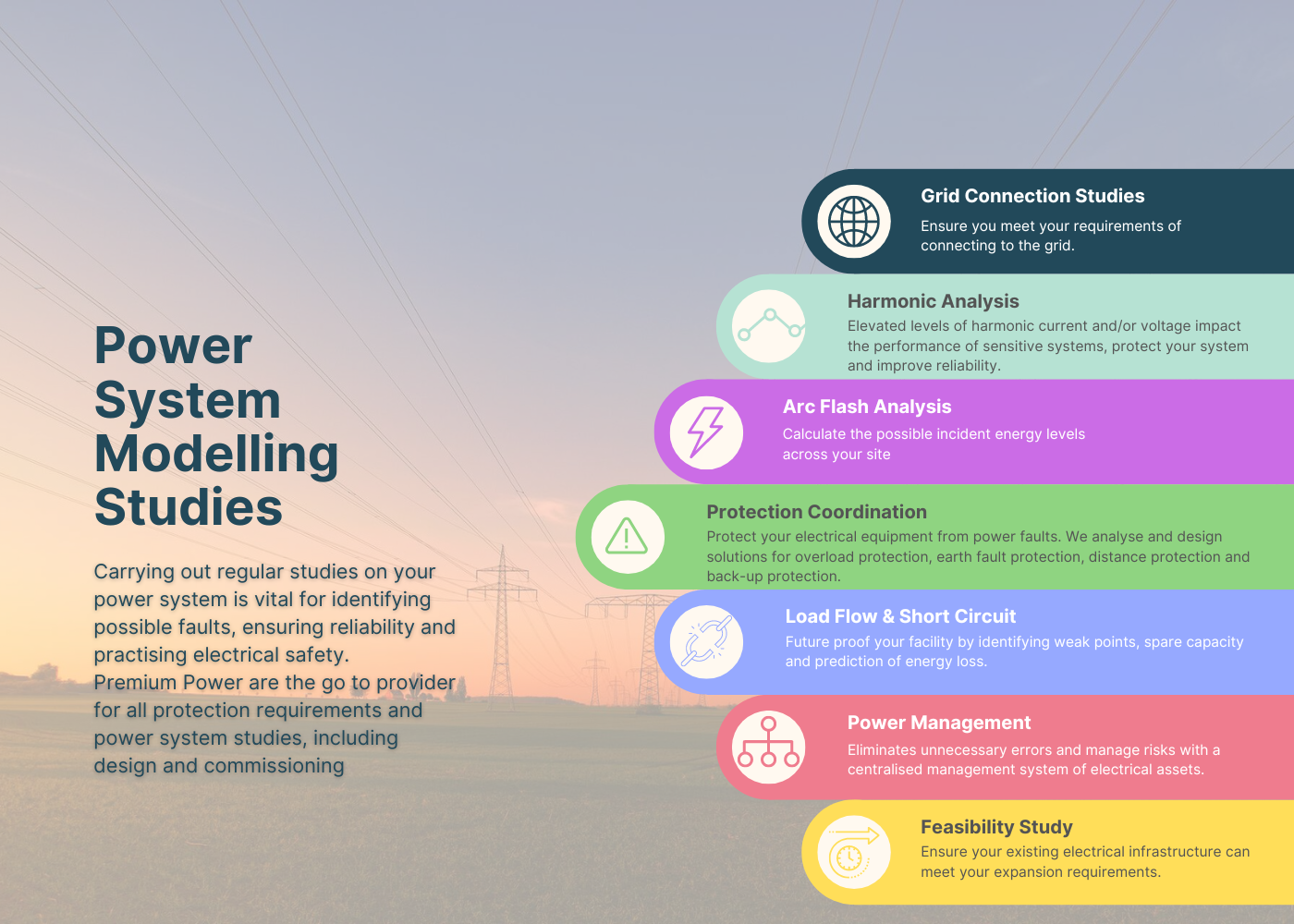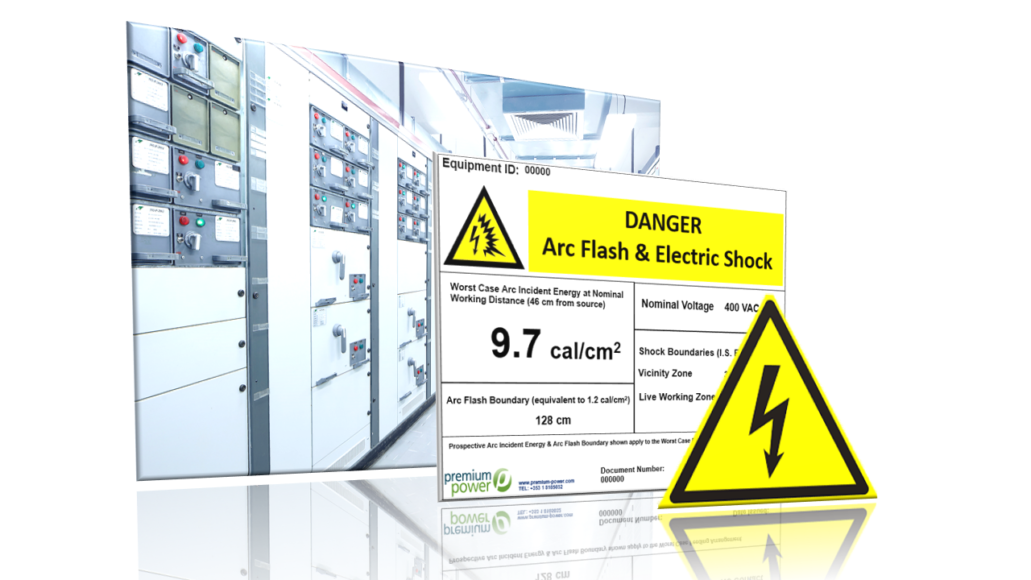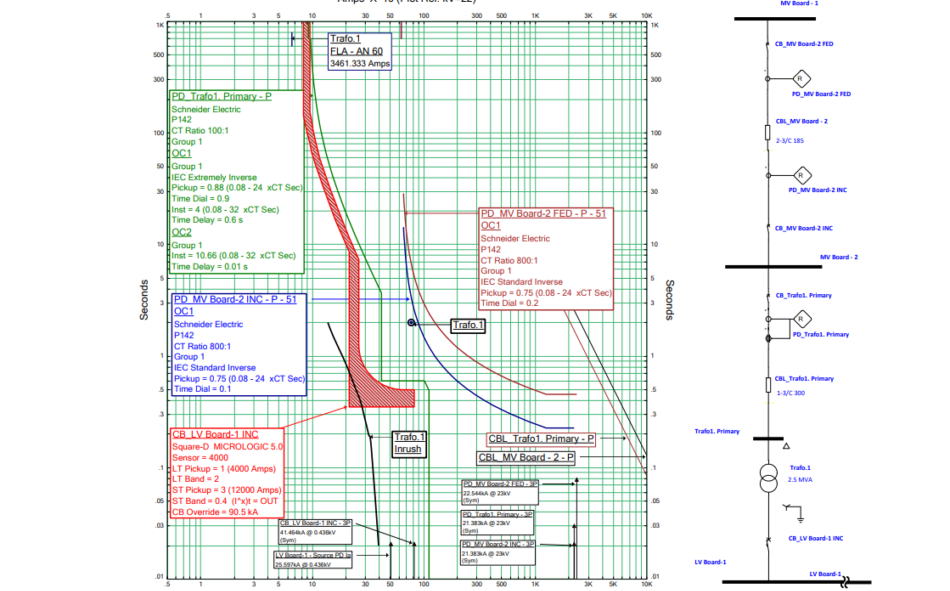Isolating faulty components in a power system will help prevent serious power faults. The purpose of a protective device coordination (PDC) study is to model, assess and produce recommendations that will ensure as far as possible that in the event of a fault the protection device closest will operate first, thus limiting downtime to this part of the system.
In order to ensure these protective devices operate in the correct sequence we look at the characteristic curves of breakers and fuses and ensure that they do not overlap inappropriately. Having completed this analysis we may propose adjustments to the settings of the circuit breakers and the types of fuses. It is possible at this stage we might include an electrical safety perspective.
PDC studies are an invaluable exercise in ensuring an electrical system operates to the required standard of reliability. Any electrical system will over time face new demands and requirements. Any significant changes to a site may impact on the behavior of protection coordination and need further analysis and adjustments.
















